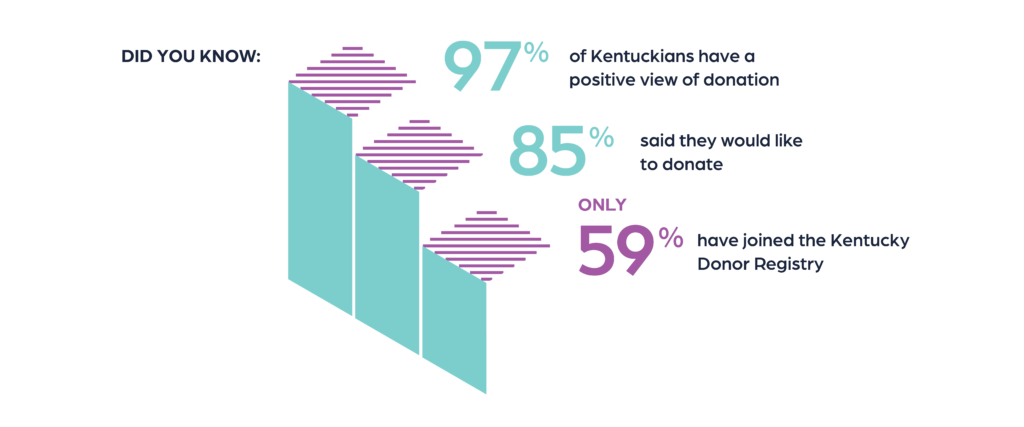Kentucky Circuit Clerks' Trust For Life
We register Kentucky residents as organ donors.
VisitJoin more than 2,031,230 registered donors
Register

Organ, eye and tissue donors offer recipients a second chance at life, but the need for donations is much greater than the number available — and every day more people are added to the waiting list.
Donate Life Kentucky consists of organ, eye and tissue nonprofits around the state, dedicated to educating on the importance of donation and encouraging everyone to become registered donors. KODA, KY Circuit Courts Clerks and Kentucky Lions Eye Bank helped establish the Donor Registry.

Eleanor was on full life support after her birth in 2010. Tests revealed a congenital heart defect. Doctors said a transplant was the only option, and she was added to the national waiting list for a heart transplant. She is alive today because of organ donation. Eleanor’s parents know few details but have sent a letter of deep gratitude to their donor and family. Eleanor is now a big sister and a lively spirit to be around!
See more Gift of Life stories here.

All major religions in the United States support organ, eye and tissue donation.
One of the biggest myths is that donation is against some religions. In fact, most religions regard it as a final act of love, charity and generosity.
Wealthy and famous people have to wait, just like everyone else.
The misperception that celebrities receive transplants more often is just a result of how much more attention is paid to their lives, as opposed to the public.
Anyone, at any age, can be considered for organ donation.
There are no age limits. Parents or guardians must authorize donation for those under 18, but the oldest donor in Kentucky was 83. She saved 3 lives.

There are various organs on the list, for a variety of transplant needs. Today, more than 114,000 Americans, 1,000 Kentuckians and 1,000 Hoosiers are awaiting one of these life-saving organs.
As the hardest working muscle, the heart is responsible for pumping blood throughout the body. Leading causes for transplant: Heart failure, heart disease and cardiomyopathy.
Kidneys filter waste and excess water from the blood to balance the overall fluid in the body. Leading causes for transplant: Cystic kidney disease, high blood pressure and diabetes.
Air is carried to the lungs where small air sacs extract oxygen and exchange it for carbon dioxide. Leading causes for transplant: Cystic fibrosis and pulmonary hypertension.
The liver breaks down harmful substances in the blood, aids in digestion and stores vitamins, sugars and fats. Leading causes for transplant: Liver disease and hepatitis.
The pancreas makes insulin, which helps the body use sugar for energy and produces enzymes that break down fat, protein and carbohydrates. Leading causes for transplant: Type 1 diabetes and pancreas failure.
The small intestine digests food and absorbs nutrients back into the bloodstream. Leading causes for transplant: Twisted or blocked intestines, most commonly in babies.
Cornea transplant is the most common of all transplants performed, exceeding 46,000 per year in the United States. Thanks to advances in pharmacology, medical instruments, and surgical techniques, cornea transplants exceed a 95% success rate.
The cornea protects the eye from dust and germs and is responsible for focusing. Leading causes for transplant: Hereditary, glaucoma, injury including burns and abrasions, disease and infection.
Bone, cartilage, fascia, heart valves, ligaments, pericardium, skin, tendons, and veins are all included with tissue donation. These donations are used for many reasons to save and heal recipients:
Living donors can provide many types of organs, including the kidney and segments of the liver, lung, and pancreas without reduced function to their own bodies.
Separate from the Kentucky Donor Registry, living donation is not included when you register to become an organ, eye and tissue donor online or at the Circuit Court Clerk’s Office. Once an individual decides to be a living donor, he or she must qualify through a hospital transplant program to be considered.